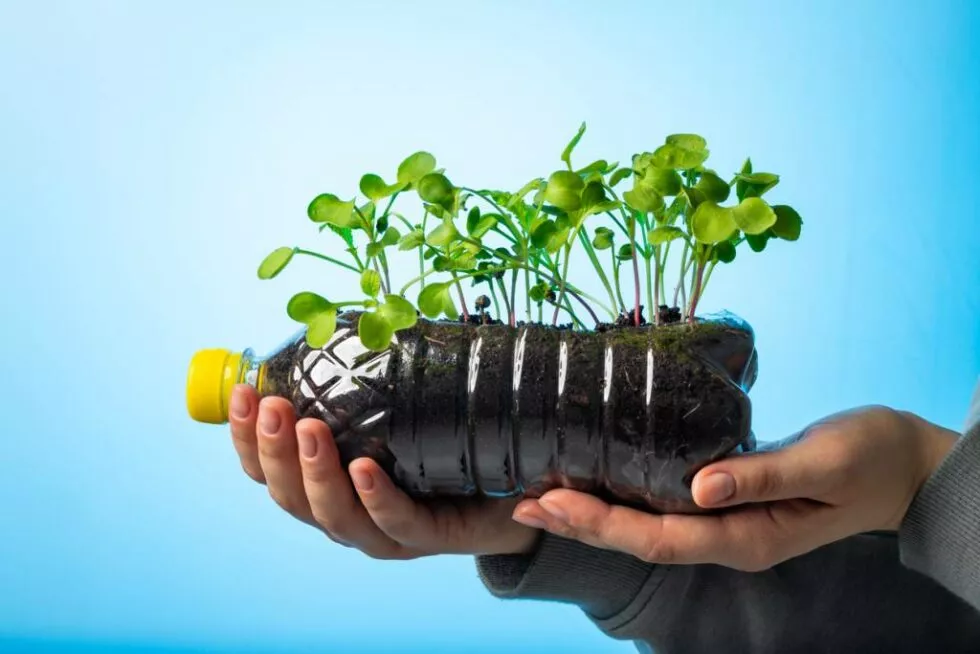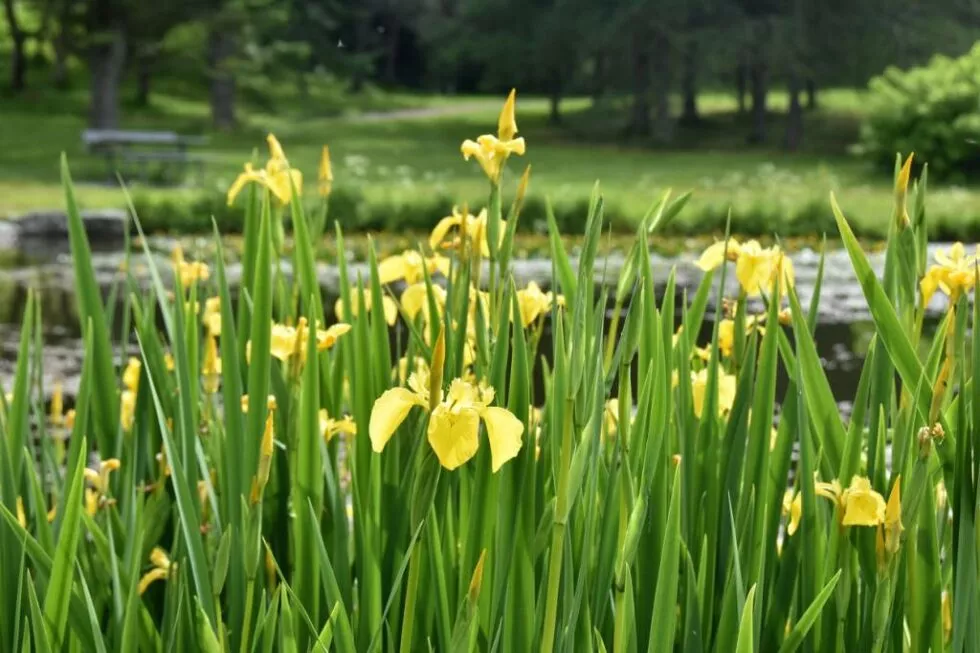Individual sanitation using plants
To protect the environment and avoid causing a nuisance to neighbours due to odours, the law requires that domestic wastewater be properly treated before being discharged. If your house is not connected to the mains drainage system, investing in an individual plant-based sanitation system is an excellent idea. It is an ecological and economical solution that uses phyto-purification to treat liquid domestic effluents. How does an individual plant-based sanitation system work? How much does it cost? How do you install it? Aquatiris answers your questions.
Why invest in a plant-based individual sanitation system?
Phyto-sanitation allows wastewater to be filtered and oxygenated in order to eliminate the pollutants it contains. These effluents can be loaded with nitrates, phosphates, metals (mercury, chromium, lead, etc.), hydrocarbons or pathogenic biological agents. In the plant-based sanitation basin, a substrate of gravel and silica sand is combined with a filter planted with purifying aquatic plants. Choosing a phyto-purification system is an environmentally responsible gesture.
The process takes place without producing environmental waste or atmospheric pollutants (methane, for example). Natural purification by plants does not require the use of electrical energy or any other form of fossil fuel. Phyto-purification produces compost that can be used as fertiliser for your garden soil. As a non-collective sanitation device, the planted filter is autonomous and sustainable. It only requires annual gardening-type maintenance (mowing) to facilitate good plant growth and limit clogging.
The vegetated filtering bed normally needs cleaning once every 10 years. This ecological solution avoids the need for regular emptying of the septic tank, as is the case with traditional purification solutions. The resulting considerable reduction in maintenance costs makes your individual plant-based sanitation system very economical in the long term. Planted filters also improve the appearance of your garden. The flowering plants are carefully chosen and arranged to create a harmony of shapes, sizes and colours in the outdoor space.

How does an individual plant-based sanitation system work?
The natural autonomous sanitation system consists of one or more basins for the purification of waste water connected in a single continuous flow. The planted filter surface area is equal to 2m² per population equivalent. Each basin contains a substrate (gravel+sand or gravel+topsoil) to support plant growth.
Thanks to the plant stems and roots, the substrate is considerably aerated and provides an optimal growth environment for bacteria. It is the bacteria that purify the wastewater by breaking down the organic pollutants. There is no production of sludge or release of foul odours. Phyto-purification generally takes place in 3 stages.
Pre-treatment of wastewater
This stage is optional when installing an individual ecological sanitation system for domestic effluents. When the home uses dry toilets (using wood chips or sawdust to degrade faecal matter), grey water can be collected in a grease trap. If a water toilet is used, the effluents are collected in an all-water septic tank. A traditional septic tank and a grease trap can also be combined for the collection of black water and grey water respectively. At this stage, the solids (grease and oil) are separated from the water by decantation.
The treatment of domestic effluents
Traditional phyto-purification systems generally combine a vertical planted filter and a horizontal filtering bed. The first stage takes place in the vertical flow sanitation basin which generally contains a filter planted with reeds (and possibly with rushes or bulrushes). The aerobic bacteria attack the polluting organic macroparticles contained in the pre-treated water. The second stage involves chemical and biological treatment in an anaerobic environment in the horizontal flow basin.
It contains a filter planted with ornamental aquatic plants such as irises, sedges, water mint and purple loosestrife. The water is freed of the nitrates, phosphates and heavy metals that it contains in excess. The second planted filter also considerably reduces the concentration of the liquid with infectious biological agents.
Discharge of treated water
The water purified by the planted filters cannot be discharged into a drinking water source. It is possible to construct a pond as an outlet for the purified effluents. The natural autonomous purification system can be connected to dispersal drains. These drainage systems facilitate the infiltration of the treated water into the soil.
Which aquatic plants are suitable for individual plant-based sanitation?
For the right choice of plants for your phyto-sanitation system, trust the expertise of a leading specialist such as Aquatiris. It all depends on the volume of effluents to be treated and the quality of the pollutants to be eliminated.
Common reed
Phragmites australis is an essential reference in the field of phyto-purification. It is an invasive perennial with highly developed rhizomes that provide optimal oxygenation for high-consuming aerobic bacteria. It is possible to only install a common reed sanitation basin due to the very high purifying power of this plant species. Common reed is highly resistant to changes in water regime (however, long periods of water deprivation in the system must be avoided).

Marsh irises
Iris pseudacorus plants generally form dense clumps at the edge of waterways and in marshy or damp environments. They can reach a height of 1m when blossoming. Thanks to their beautiful and large yellow flowers, they are very decorative. The rhizomes of this species develop slowly, compared to common reed for example.
Sedge
The marsh sedge (Carex acutiformis) and the riparian sedge (Carex riparia) are two species widely used in phyto-purification. They make up the planted filters at the end of the wastewater treatment process. They are evergreen perennials that can quickly colonise their environment. They are very resistant and can withstand a winter of -29⁰C.
Water mint
These purifying plants have small lilac flowers that give off a strong minty odour. Very decorative, water mint (Mentha aquatica L.) grows rapidly and has highly filtering roots. It is generally integrated into the secondary sanitation basin.
Purple loosestrife
Very widespread in Europe, these perennial herbaceous plants of the Lythraceae family thrive in damp soil. In summer, they are recognisable by their long, purple-pink spike-shaped inflorescences. They are commonly used as a reference for the composition of planted flower filters. Lythrum salicaria is very effective at capturing the nitrates and phosphates contained in pre-treated water.
How do you install an individual plant-based sanitation system?
Before installing your ecological wastewater purification solution, a proper design study must be carried out. This can be carried out by a sanitation design office or by an approved specialist such as Aquatiris. It involves analysing your real needs in terms of the treatment and disposal of domestic effluents. Your landscaping preferences must also be assessed. A study of the soil and characteristics of the land around your house is also carried out.
This department checks the technical feasibility of your project and the use of an approved phyto-purification system for the work. It is possible to install the individual plant filtration system yourself with the help of an expert from Aquatiris. Our specialised national network can supply you with all the plastic materials, aquatic plants and substrates you need for the project. The approved professional will explain each stage of construction to you. By choosing to build your own ecological phyto-purification solution, you can reduce the cost of the work.
To guarantee the reliability, durability and optimal efficiency of the wastewater treatment system, the best option is to entrust the entire technical implementation of the project to one of the experts from our national network. Trust experienced and duly trained professionals to progress more quickly with the work. For the proper maintenance of your phyto-purification effluent treatment system, you can also count on the help of Aquatiris experts.

What is the price of a plant-based sanitation system?
The price of a phyto-sanitation system depends on many factors. To get a correct estimate of the cost of your work, you can contact a nearby Aquatiris expert to quickly obtain a reliable and personalised quote. Among the factors to consider are:
- the size of the installation according to the number of inhabitants of the house,
- the landscaping requirements,
- the type of planted filters to be used,
- the extent of the preliminary work to prepare the land,
- the installer’s expertise costs.
Plant-based sanitation system: who should you entrust your project to?
Aquatiris is a national network specialising in innovative and ecological solutions for the treatment and disposal of domestic effluents in France. We offer natural and autonomous sanitation gardens. Our experts will help you install a reed planted filter in your garden. Aquatiris also offers phyto-purification gardens of the Iris and Carex ranges.

